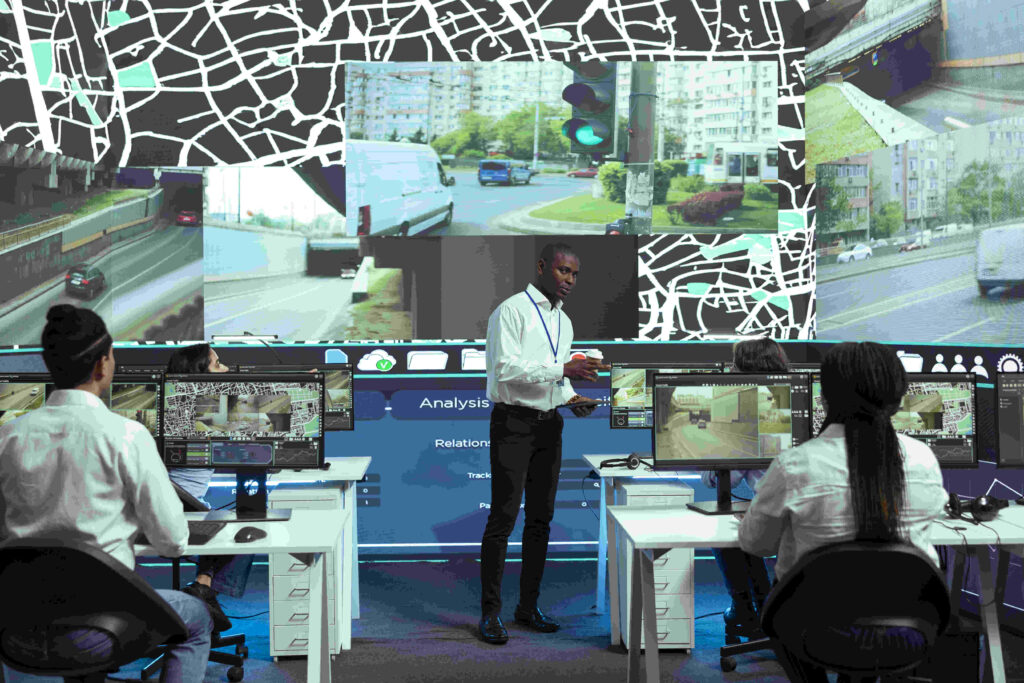Cybersecurity is no longer just the responsibility of IT departments; it is a critical concern for every employee within an organization. With the increasing sophistication of cyber threats, organizations must foster a strong cybersecurity culture to protect sensitive data, maintain customer trust, and ensure business continuity. This article will guide you through the essential steps to build a robust cybersecurity culture in your organization, ensuring that every team member understands their role in safeguarding digital assets.

Understanding Cybersecurity Culture
What is Cybersecurity Culture?
Cybersecurity culture refers to the collective attitudes, beliefs, and behaviors within an organization that influence how employees approach and manage cybersecurity risks. It encompasses the awareness, knowledge, and practices that employees adopt to protect the organization’s digital infrastructure from cyber threats.
Why is Cybersecurity Culture Important?
A strong cybersecurity culture is vital because human error is one of the leading causes of security breaches. Employees who are unaware of cybersecurity best practices can inadvertently expose the organization to risks such as phishing attacks, malware infections, and data breaches. By fostering a cybersecurity culture, organizations can reduce vulnerabilities, enhance compliance with regulations, and build resilience against cyber threats.
Steps to Build a Cybersecurity Culture
1. Leadership Commitment
The Role of Leadership in Cybersecurity
Leadership plays a pivotal role in shaping the cybersecurity culture of an organization. When leaders prioritize cybersecurity, it sends a clear message to employees that protecting digital assets is a top priority. Leaders should actively participate in cybersecurity initiatives, allocate necessary resources, and set an example by adhering to security protocols.
Actions for Leaders
- Develop a Cybersecurity Vision: Leaders should articulate a clear vision for cybersecurity that aligns with the organization’s overall goals.
- Allocate Resources: Ensure that the organization has the necessary tools, training, and personnel to implement effective cybersecurity measures.
- Lead by Example: Leaders should demonstrate a commitment to cybersecurity by following best practices and participating in training programs.
2. Employee Training and Awareness
The Importance of Training
Employee training is the cornerstone of a strong cybersecurity culture. Regular training sessions help employees understand the latest threats, recognize potential risks, and adopt secure behaviors. Training should be tailored to different roles within the organization, ensuring that everyone receives relevant and actionable information.
Effective Training Strategies
- Regular Workshops: Conduct regular workshops to keep employees updated on emerging threats and best practices.
- Simulated Phishing Exercises: Use simulated phishing attacks to test employees’ ability to recognize and respond to phishing attempts.
- Interactive Learning: Incorporate interactive elements such as quizzes, games, and real-life scenarios to make training engaging and memorable.
3. Clear Policies and Procedures
Developing Cybersecurity Policies
Clear and comprehensive cybersecurity policies provide employees with guidelines on how to handle sensitive information, use company devices, and respond to security incidents. Policies should be easily accessible, regularly updated, and communicated effectively to all employees.
Key Components of Cybersecurity Policies
- Acceptable Use Policy: Defines acceptable use of company resources, including email, internet, and software.
- Password Management: Outlines requirements for creating strong passwords and changing them regularly.
- Incident Response Plan: Provides a step-by-step guide for responding to security incidents, including reporting procedures and containment strategies.
4. Continuous Monitoring and Improvement
The Need for Continuous Monitoring
Cyber threats are constantly evolving, and organizations must continuously monitor their security posture to identify and address vulnerabilities. Regular assessments, audits, and updates to security measures are essential to stay ahead of potential threats.
Implementing Continuous Improvement
- Regular Security Audits: Conduct regular audits to assess the effectiveness of cybersecurity measures and identify areas for improvement.
- Threat Intelligence: Stay informed about the latest cyber threats and trends by subscribing to threat intelligence feeds and participating in industry forums.
- Feedback Mechanisms: Encourage employees to provide feedback on cybersecurity practices and suggest improvements.
5. Encouraging a Collaborative Environment
Fostering Collaboration
A collaborative environment encourages employees to share knowledge, report potential threats, and work together to enhance cybersecurity. Collaboration can be fostered through cross-departmental teams, open communication channels, and recognition of employees who contribute to cybersecurity efforts.
Building a Collaborative Culture
- Cross-Functional Teams: Create cross-functional teams to address specific cybersecurity challenges and share best practices.
- Open Communication: Encourage open communication about cybersecurity issues, ensuring that employees feel comfortable reporting incidents without fear of retribution.
- Recognition and Rewards: Recognize and reward employees who demonstrate exemplary cybersecurity practices or contribute to improving the organization’s security posture.
Measuring the Effectiveness of Your Cybersecurity Culture
Key Metrics to Track
To ensure that your cybersecurity culture is effective, it’s important to track key metrics that reflect the organization’s security posture and employee behavior. These metrics can help identify areas for improvement and demonstrate the impact of cybersecurity initiatives.
Examples of Key Metrics
- Phishing Click Rates: Measure the percentage of employees who fall for simulated phishing attacks to gauge awareness and training effectiveness.
- Incident Response Times: Track the time it takes to detect, respond to, and resolve security incidents.
- Employee Compliance Rates: Monitor adherence to cybersecurity policies, such as password changes and software updates.
Regular Assessments and Adjustments
Regular assessments are essential to ensure that your cybersecurity culture remains effective over time. Use the data collected from key metrics to make informed adjustments to training programs, policies, and security measures.
Conducting Assessments
- Employee Surveys: Conduct regular surveys to gather feedback on cybersecurity training and awareness programs.
- Third-Party Audits: Engage third-party experts to conduct independent assessments of your cybersecurity practices.
- Benchmarking: Compare your organization’s cybersecurity performance against industry standards and best practices.
Common Challenges in Building a Cybersecurity Culture
Resistance to Change
One of the most common challenges in building a cybersecurity culture is resistance to change. Employees may be reluctant to adopt new security practices or may not fully understand the importance of cybersecurity.
Overcoming Resistance
- Clear Communication: Clearly communicate the reasons for implementing new security measures and the potential risks of non-compliance.
- Involvement and Engagement: Involve employees in the development of cybersecurity policies and encourage their input and feedback.
- Gradual Implementation: Introduce changes gradually, allowing employees time to adapt and providing ongoing support and training.
Lack of Resources
Limited resources, including budget constraints and a shortage of skilled personnel, can hinder the development of a strong cybersecurity culture.
Addressing Resource Constraints
- Prioritize Initiatives: Focus on the most critical cybersecurity initiatives that will have the greatest impact on reducing risks.
- Leverage Technology: Use cost-effective cybersecurity tools and solutions that can automate routine tasks and enhance security without requiring significant resources.
- Outsource Expertise: Consider outsourcing certain cybersecurity functions to external experts or managed service providers.
Complacency
Complacency can arise when employees become overconfident in their ability to handle cybersecurity threats or when the organization has not experienced a significant security incident.
Combating Complacency
- Continuous Education: Emphasize the importance of continuous learning and staying informed about emerging threats.
- Real-Life Examples: Share real-life examples of security breaches and their impact on other organizations to reinforce the importance of vigilance.
- Regular Updates: Keep employees informed about the latest security threats and updates to policies and procedures.
FAQs
1. What is the first step in building a cybersecurity culture?
The first step is gaining commitment from leadership. Leaders must prioritize cybersecurity and set the tone for the rest of the organization by allocating resources, participating in training, and adhering to security protocols.
2. How often should employees receive cybersecurity training?
Employees should receive regular cybersecurity training, ideally on a quarterly basis. Additionally, training should be provided whenever there are significant changes in the threat landscape or updates to company policies.
3. What are some common mistakes organizations make when building a cybersecurity culture?
Common mistakes include failing to involve leadership, providing insufficient training, neglecting to update policies, and not measuring the effectiveness of cybersecurity initiatives.
4. How can organizations encourage employees to take cybersecurity seriously?
Organizations can encourage employees by making training engaging, recognizing and rewarding good practices, and fostering a collaborative environment where employees feel comfortable reporting potential threats.
5. What role do employees play in maintaining a strong cybersecurity culture?
Employees play a critical role by adhering to cybersecurity policies, participating in training, staying vigilant against potential threats, and reporting any security incidents promptly.
Conclusion
Building a cybersecurity culture in your organization is a continuous process that requires commitment, education, and collaboration. By prioritizing cybersecurity at all levels, providing regular training, and fostering a collaborative environment, organizations can significantly reduce their risk of cyber threats and protect their digital assets. Remember, cybersecurity is everyone’s responsibility, and a strong culture is the foundation of a secure organization. Start building your cybersecurity culture today to safeguard your organization’s future.

